A Taste of Okinawa in San Francisco’s Castro District
Owner Yoshi Tome came to my table at his Izakaya Sushi Ran in San Francisco, bearing bottles of awamori for me to try.
The unique clear Japanese spirit is made only in Okinawa, where he is from. Like sake, it is made from rice. But while sake is brewed, awamori is distilled, making it far more potent.
When I asked if Okinawans ever drank sake, Tome emphatically shook his head, saying, “No. They drink only three things: beer, whiskey and awamori. And they drink awamori neat — just poured over ice.”
Since Okinawans are among the longest living people in the world, they must be doing something right.
I can’t vouch for whether dining at the Castro District restaurant, which opened in December, will give you extra longevity. But it will definitely give you delicious insight into the region’s cuisine and drink, as I found out when I was invited in as a guest of the restaurant recently.
The restaurant is sister to Tome’s venerable Sushi Ran in Sausalito. Sitting right on Market Street, it features an airy, contemporary dining room with cool tubular light fixtures that resemble bamboo.
There’s a range of cocktails, including a couple that feature awamori. I tried it in the Fountain of Youth ($14), a foam-topped citrusy blend pineapple and shiso awamori, vodka, kumquat, lime and seltzer. It’s zingy and refreshing like an alcoholic shiso lemonade. But it’s not necessarily the best way to actually taste the awamori.
For that, you do need to sip it neat. Of the ones I tried, the one on the right, which was unfiltered, definitely had a throat-warming alcoholic kick along with a slight yeasty note. The left on the right, made atypically with mango yeast, was softer and creamier with a nice smooth roundness, which I really enjoyed.
The menu is made for sharing. Who doesn’t love pickles? Here, the tsukemono ($4) is a mix of carrots, onions, cucumber and red peppers. The veggies are crisp and sharper tasting with a jolt of vinegar rather than solely salt-cured.
The Negihama maki roll ($12) is crunchy and colorful with a rainbow of sesame seeds atop that add a nice toastiness to the filling of chopped hamachi.
The Crunch roll ($18) is not for purists who prefer their sushi unadulterated. Stuffed with eel and avocado, then crowned with a mound of spicy crab salad, it gets embellished to the hilt with a drizzle of unagi sauce and a big sprinkle of tempura crunchies. It’s like a California roll busting out all the moves.
The tori ($12) or chicken tempura was the only lackluster dish I encountered. Organic white meat chicken fingers get wrapped in shiso, then tempura-fried before being served with chipotle tartar sauce. Save for the spice of the sauce, the chicken itself was pretty bland. Chicken thighs probably would have made the dish a little tastier. The batter also was uncharacteristically heavy, not airy, lacy and light as would be expected.
On the other hand, the Okinawa soba ($15) is as winning as it gets. You might be more familiar with soba that’s made with buckwheat. Here, it’s golden egg noodles made with wheat, which is apparently the traditional way this ramen-like dish is served in Okinawa. The noodles, brought in from Hawaii, are rustic — with irregular bends that not only give them a hand-made quality but add a wonderful chew to them. A meaty, on-the-bone pork rib floats in the center of the bowl. The meat is so tender that you can just use your chopsticks to peel it from the bone to enjoy with the broth that manages to be plenty porky tasting yet not nearly as salty or greasy as typical ramen broth. It’s a bowl you can finish without feeling like there’s a brick in your stomach afterward.
For even lighter appetites, the miso-glazed salmon ($19) is a succulent fillet that gets a traditional deep smoky char from a high-heat Japanese grill. The accompanying broccolini also get singed on the grill, making their edges papery crisp.
For dessert, the offerings definitely skew traditional with a slight nod to American palates. The Okinawan doughnuts are a treat Tome grew up with. He remembers eating them plain as a snack after school. I can see doing that, too. They are solidly crunchy on the outside with a denser texture almost like pound cake on the inside. Their taste is a little like vanilla wafers — with a kind of plainness to them that really appeals. To appease American palates that like desserts quite sweet, Tome decided to serve the doughnuts with a scoop of ice cream along with a tiny pitcher of Tcho chocolate sauce.
The purple yam mochi cake is again not sugary sweet. Indeed, there’s almost a faint savory quality to it, especially with the topping of kinako (roasted soybean flour) that lends a really toasty, chestnut-y presence. The cake has a chewy, bouncy texture that I can’t resist.
What a delightful way to get acquainted with Okinawan cuisine.

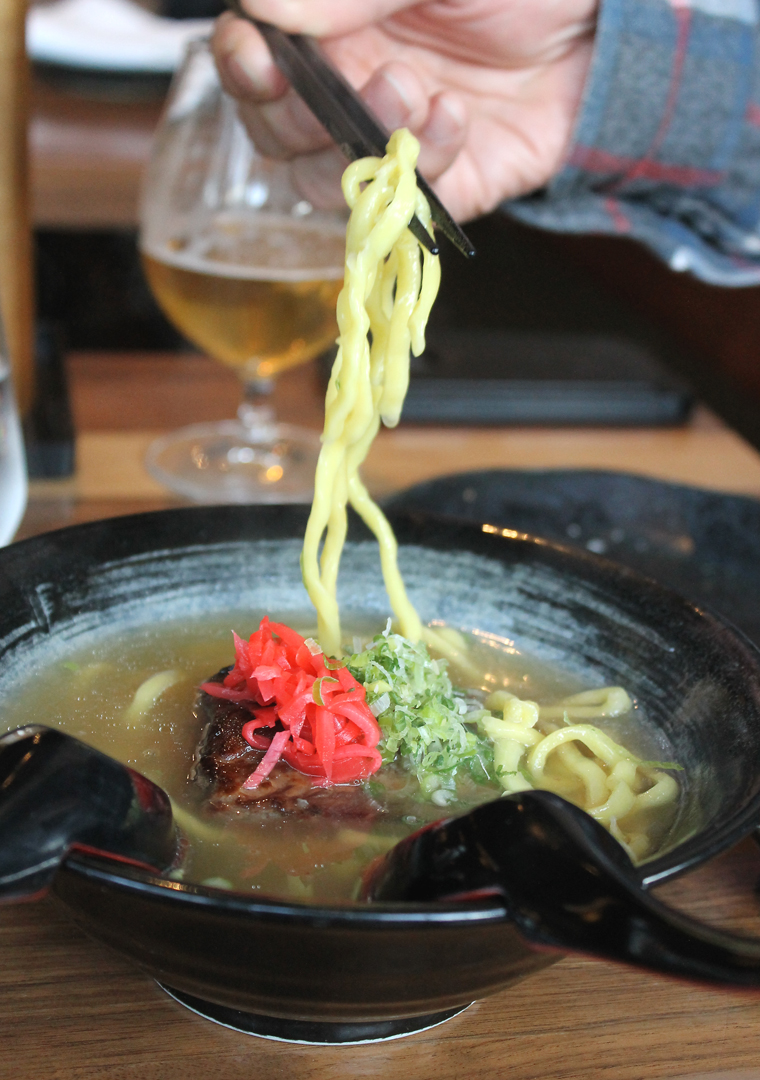
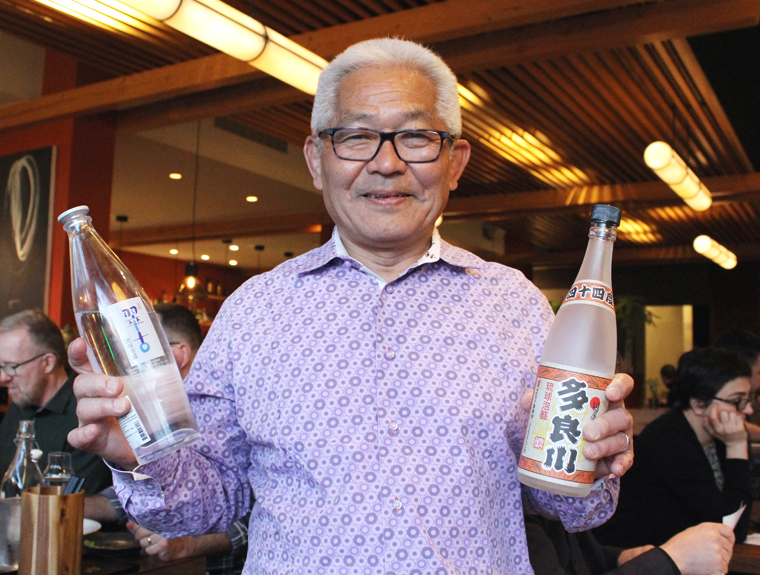

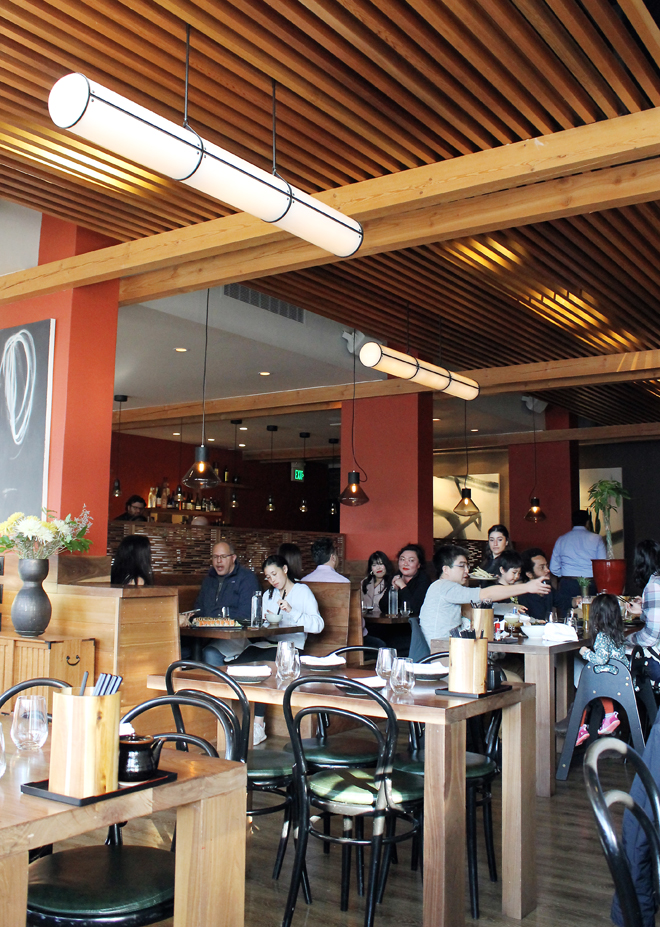
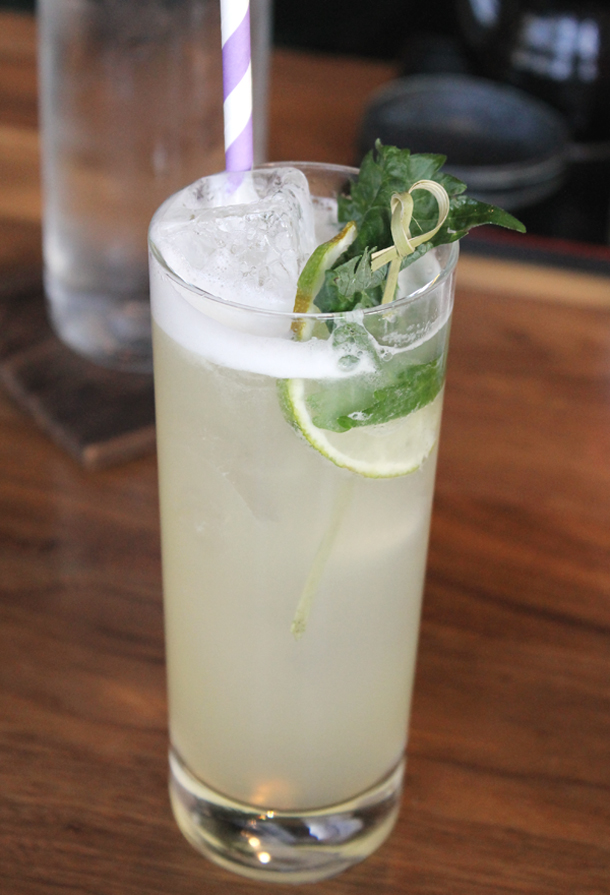
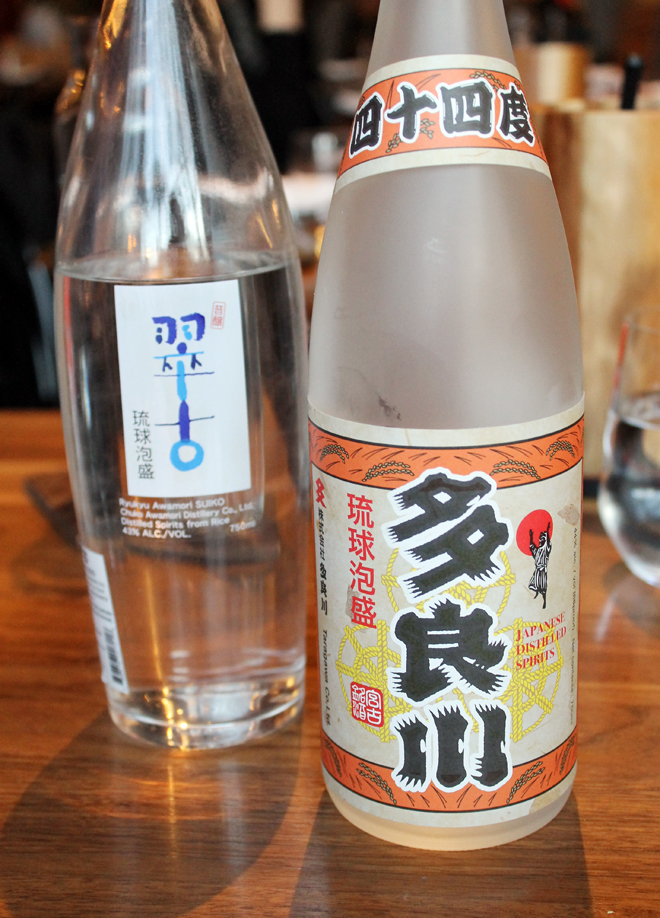
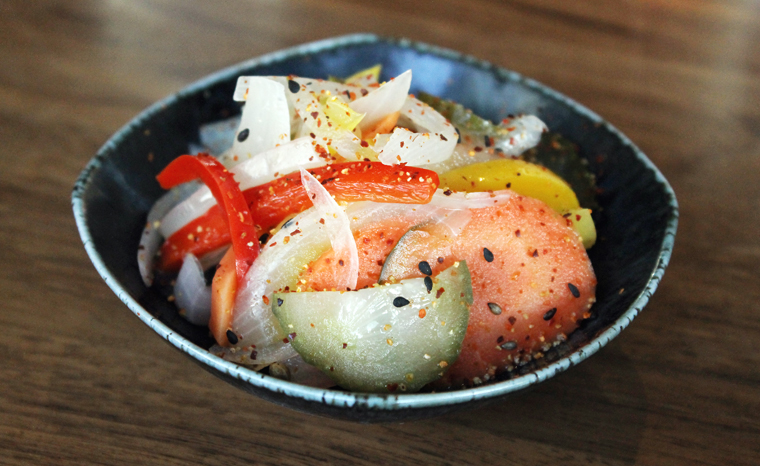
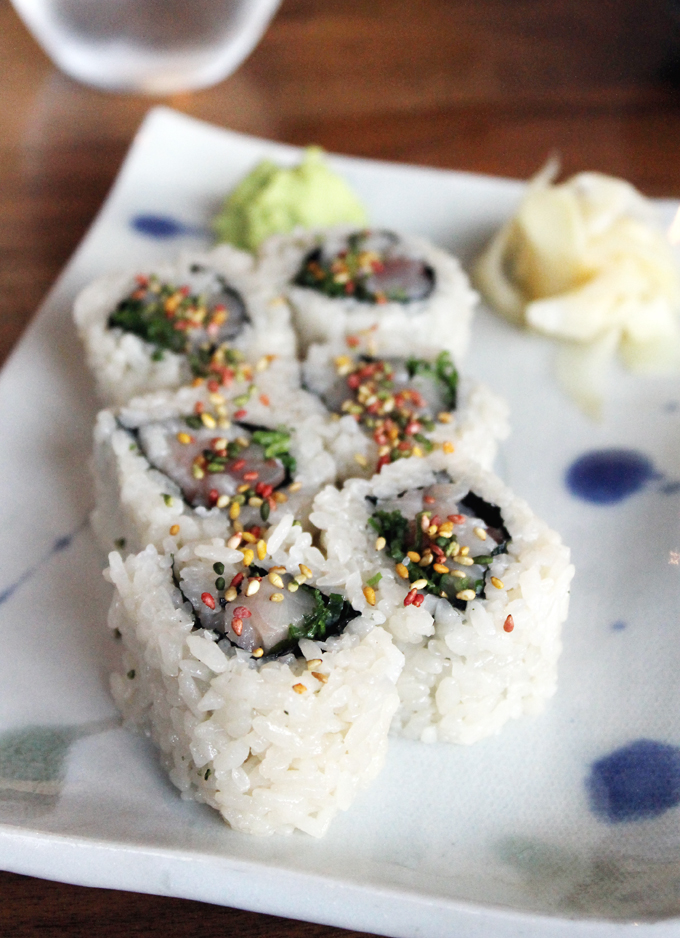
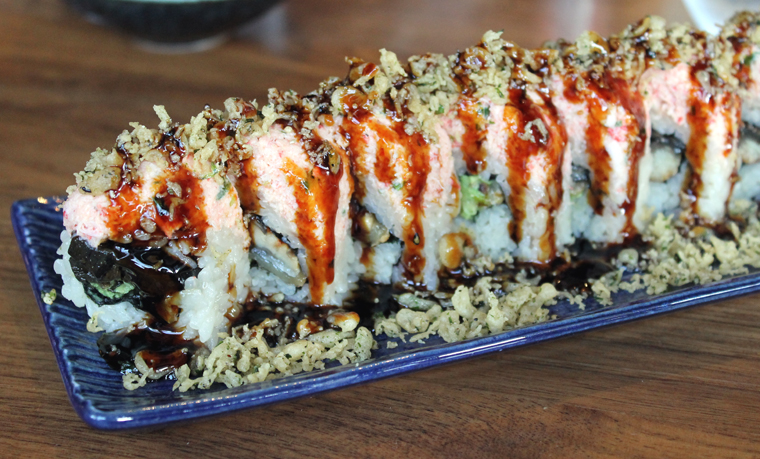
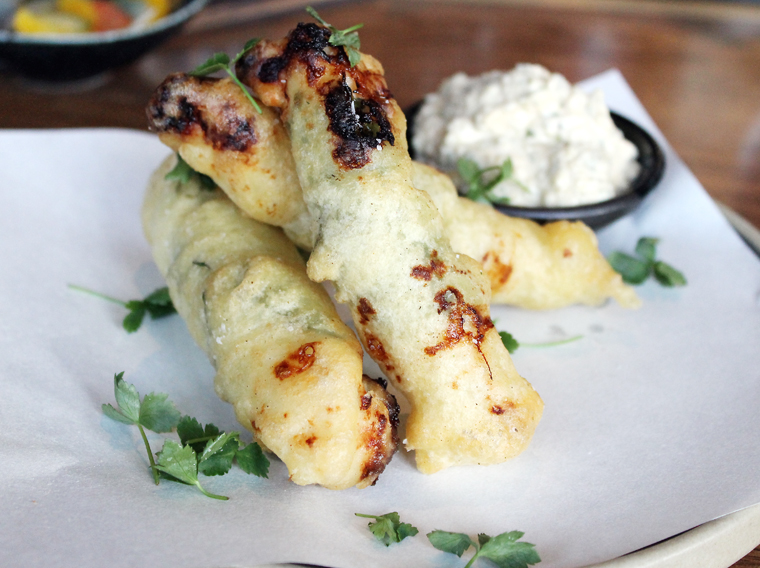
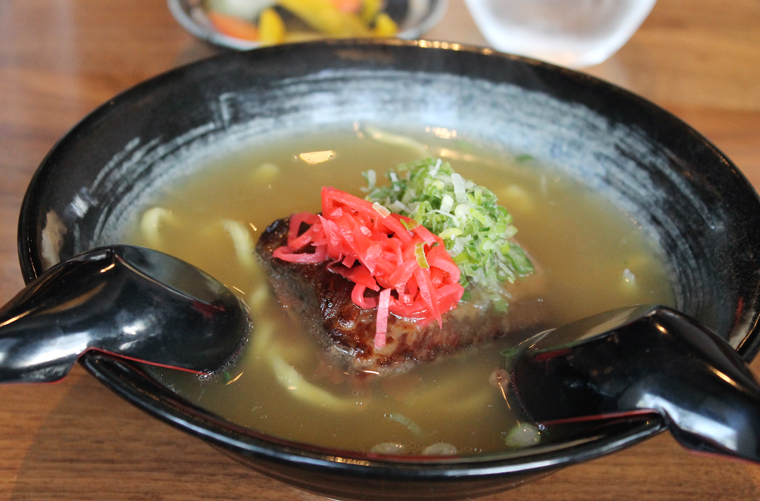
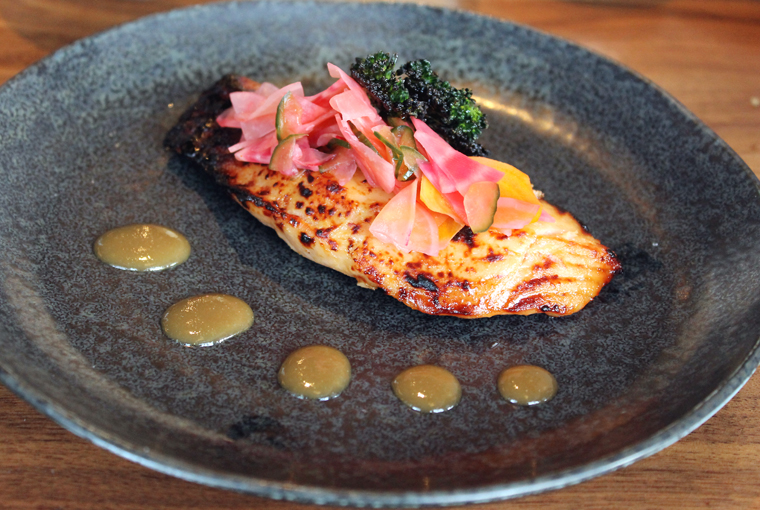
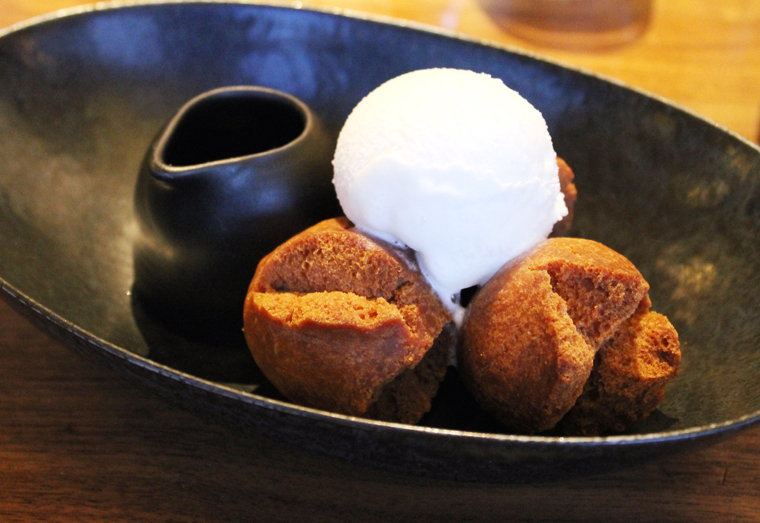
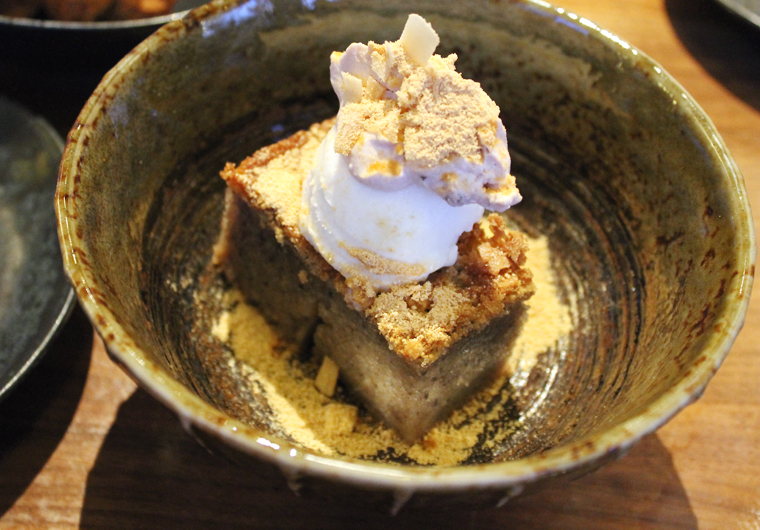
I loved their original location; this looks promising!